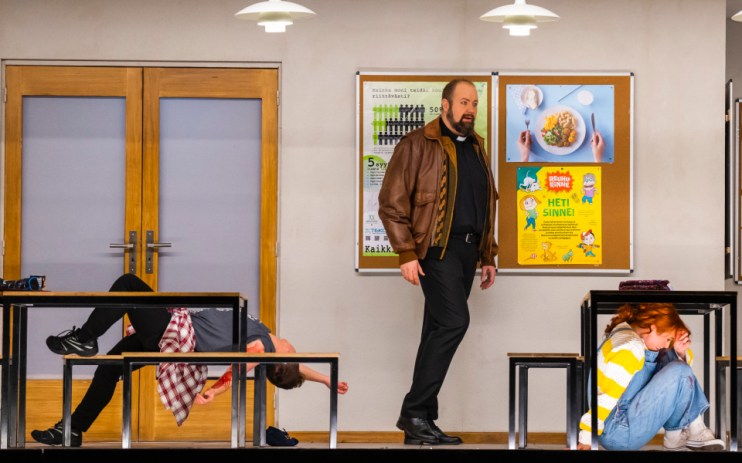Innocence at ROH: School shooting opera is brutal but brilliant

Opera, that most dramatic of art forms, has routinely attracted the most tragic of narratives. Torture, tyranny, poverty: there is an opera for every personal and political hardship, and now, with Kaija Saariaho’s Innocence, there’s an opera for the most modern of tragedies, a school shooting.
Innocence begins at the wedding of Stela and Tuomas, a small affair, where a handful of family members share a long-buried secret, unsuspected by the bride. A waitress, Tereza, recognises the family and is thrown into shock – the revelations that follow are combined with the traumatic recollections of the murder of ten students and a teacher at an International School in Finland ten years prior.
Saariaho’s score is a tense cacophony of overlapping motifs and vocals, distinguishing and then entwining the personalities of all thirteen characters. Dissonance marks the entire opera and is enhanced by the multilingual libretto, developed by Sofi Oksanen, with translations by Aleksi Barrière. The distortion of sound provides intricate layers to each moment, building to unsettling fever pitches of suspense.
Chloe Lamford’s slick revolving staging has the stories playing one above the other simultaneously. It’s a clever use of the space, helping Aussie film director Simon Stone’s theatrical eye for the intricacies of human relationships successfully transfer to the operatic stage.
Susanna Mälkki conducts the orchestra with plenty of equanimity and confidence. The cast, a mix of operatic singers and actors, also give an assured performance. Special mention should go to the Finno-Urgic vocal specialist Vilma Jää as Markéta, who punctuates the drama with sorrowful reflections, producing yelping notes akin to herding calls. Markus Nykänen makes for a convincingly conflicted Tuomas, with his earnest tenor voice. Julie Hega gives a remarkable performance as Iris, whose rage and anguish were by far the most convincing on stage.
Not a single firearm is shown throughout the production, yet limp bloodied bodies are strewn across the stage and those who were shot jitter and convulse in pain, demanding recognition in their vocal cries. In showing the extent of the violence, the production walks the line between visceral and obscene.
Hair-raising or haunting, or both simultaneously, it is hard not to question to what end the graphic imagery is deployed. In the end, the small rays of hope and redemption carry enough weight to escape the glorification of brutality. Trauma, its manifestations and how we cope with it, becomes the focal point of this opera.
Innocence is a harrowing achievement, but an achievement nonetheless.